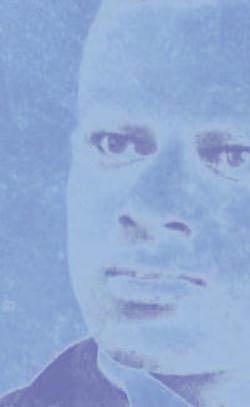
Study Areas
Emancipation Day: Harrisburg's African American Community Celebrates End of Slavery in West Indies, 1857
Prior to the end of slavery in the United States, northern Blacks had few occasions to celebrate the ideas of freedom and equality. Independence Day rang hollow for most free African Americans, many of whom had family and friends in bondage in slave-holding states. The raucous celebrations of July Fourth also posed a threat to free Blacks in large cities, who were often targeted with firecrackers by malicious revelers. As a result, many free African Americans remained indoors or otherwise maintained a low profile during the explosion-filled holiday.
Harrisburg residents, along with Blacks in other large northern cities, chose a different day and a different cause for celebration: August first was Emancipation Day, in honor of the 1834 act of the British Parliament bringing an end to slavery in the British West Indies. The day was marked by parades and abolitionist speeches, often to the confusion of the local white community, who did not understand the significance of the date.
Harrisburg's Emancipation Day
The earliest documented Emancipation Day celebration in Harrisburg occurred in 1857, on a small scale. School children were organized into a parade through the city's Tanner's Alley neighborhood under the direction of Charles Robinson, an established oysterman and neighborhood patriarch. Though he could neither read nor write, Robinson choreographed an intricate series of maneuvers to smartly squeeze the procession through the maze of narrow alleys that constituted the African American portion of the East Ward.
A writer for the Harrisburg Daily Telegraph reported the event in its afternoon edition:
Love and Charity. A company consisting of about twenty colored children marshaled by Charley Robinson paraded in Walnut street this morning. They were uniformed in sashes of red, white and blue muslin, with red rosettes, and carried a banner with the words "Love and Charity" imprinted thereon. About every third one of the juveniles were provided with a miniature drum and brass trumpet, which they "tooted" with an earnestness that showed their feelings were strongly enlisted in the cause, whatever it was.When the company arrived at Tanner's alley, marshal Robinson in true military style advanced before the drummer, and planting his baton of office upon the ground, bade them wheel to the right, and the precision with which this movement was executed drew from even the soldiers themselves loud and repeated bursts of applause. The last we saw of the precious youngsters they were about filing into the colored Masonic Hall, where we presume they were regaled on doughnuts and ginger-bread.
While the significance of the 1857 celebration escaped the white reporter for the Telegraph, and probably most of those who watched from the street corners outside of the Black neighborhood, it was not lost on those who had laboriously sewn the muslin sashes, fashioned the red rosettes, or who had put forth the funds for the miniature band instruments. Much preparation had gone into this brief show of support for "Love and Charity," the basic Christian principles that buttressed the Black church's support for abolition.
Two years later, Harrisburg's African American community would again come together for a celebration of freedom in lands other than their own. The 1859 event, bigger and better, brought together celebrants from around the region: Carlisle, Baltimore and Philadelphia. Instead of a band of twenty school children, this event featured a mounted Grand Marshall, a uniformed and armed color guard, a brass band from Philadelphia, marching contingents from the local temperance society and cultural clubs, and another band from the Odd Fellows lodge.
The magnificent parade began in town and proceeded to a nearby picnic grove where speeches were given by Jacob C. White, Jr. and Henry Highland Garnet, two nationally prominent Black leaders. The Rev. Charles W. Gardner of Harrisburg also spoke. At seventy-seven years of age, the elderly Gardner, a highly respected Presbyterian minister, had experienced much change in the rights accorded to Black people. Born during the revolution, when Blacks were enslaved in every state except Vermont, he saw the gradual abolition of the hated practice throughout the north. In his later years he saw slavery grow more entrenched in the south, and heard the rhetoric over its fate grow increasingly bitter. On this day he had come to celebrate its demise in a foreign land, and to pray for the same result in his native land.
The day ended with picnic food, drink, and a concert back in the town. Unlike the earlier event, some whites did join the festivities, and the local newspaper reporter was no longer confused as to the reason for the celebration, although he may not have entirely understood it.
Sources
Harrisburg Daily
Telegraph, August 1, 1857
Benjamin Quarles, Black Abolitionists, 1969, pp. 116-117.
Did you know?
Emancipation Day later came to mean the day on which Abraham Lincoln's Emancipation Proclamation went into effect, which was January 1, 1863. However many states have their own distinct observance of Emancipation Day, which pertain to some aspect of the end of slavery there. Another popular holiday relating to the end of slavery in the United States is Juneteenth. In the Caribbean, Emancipation Day, as it was originally observed, is widely celebrated in August.
 Covering
the history of African Americans in central Pennsylvania from the colonial era through the Civil War.
Covering
the history of African Americans in central Pennsylvania from the colonial era through the Civil War.
Support the Afrolumens Project. Read the books:
The Year of Jubilee, Volume One: Men of God, Volume Two: Men of Muscle

